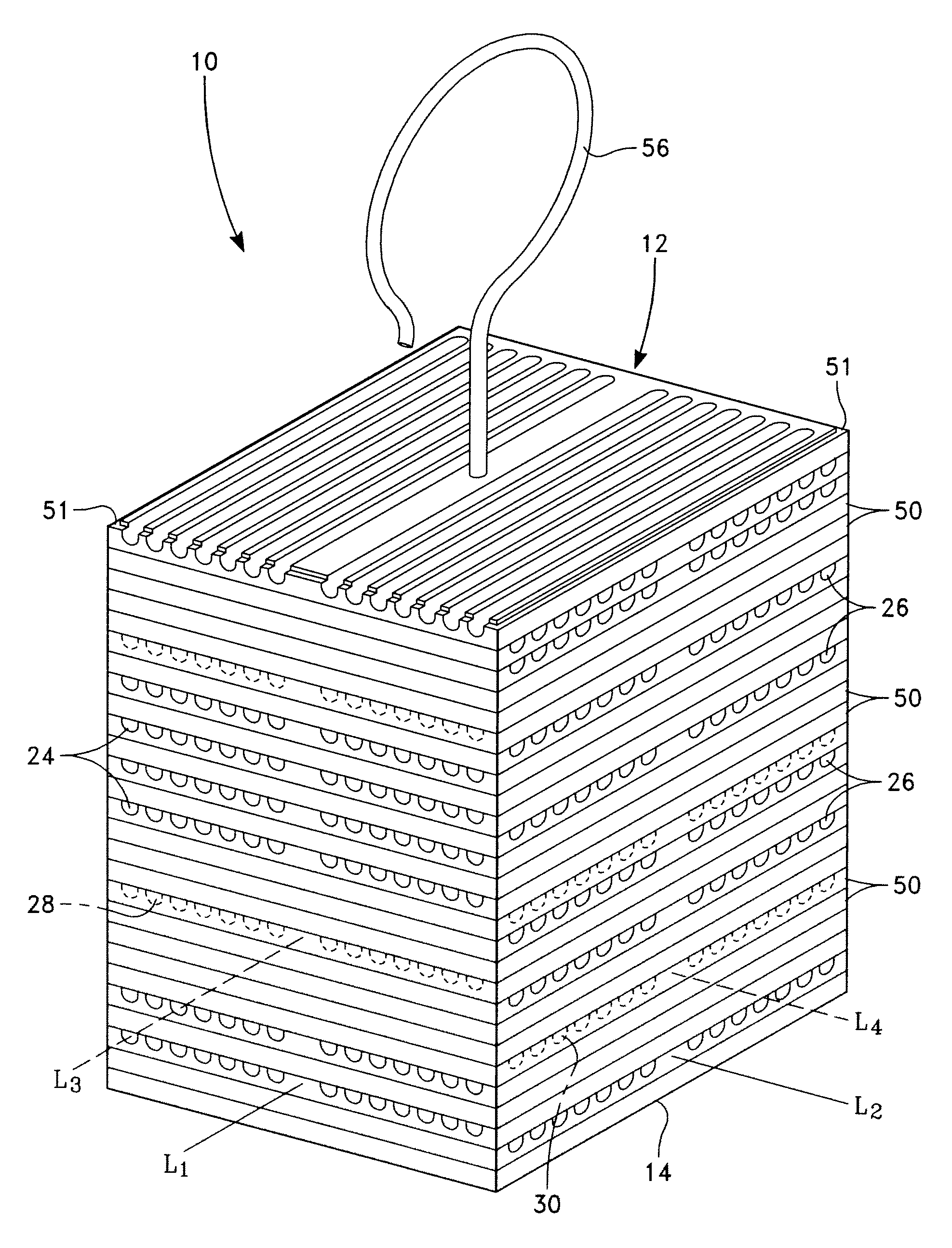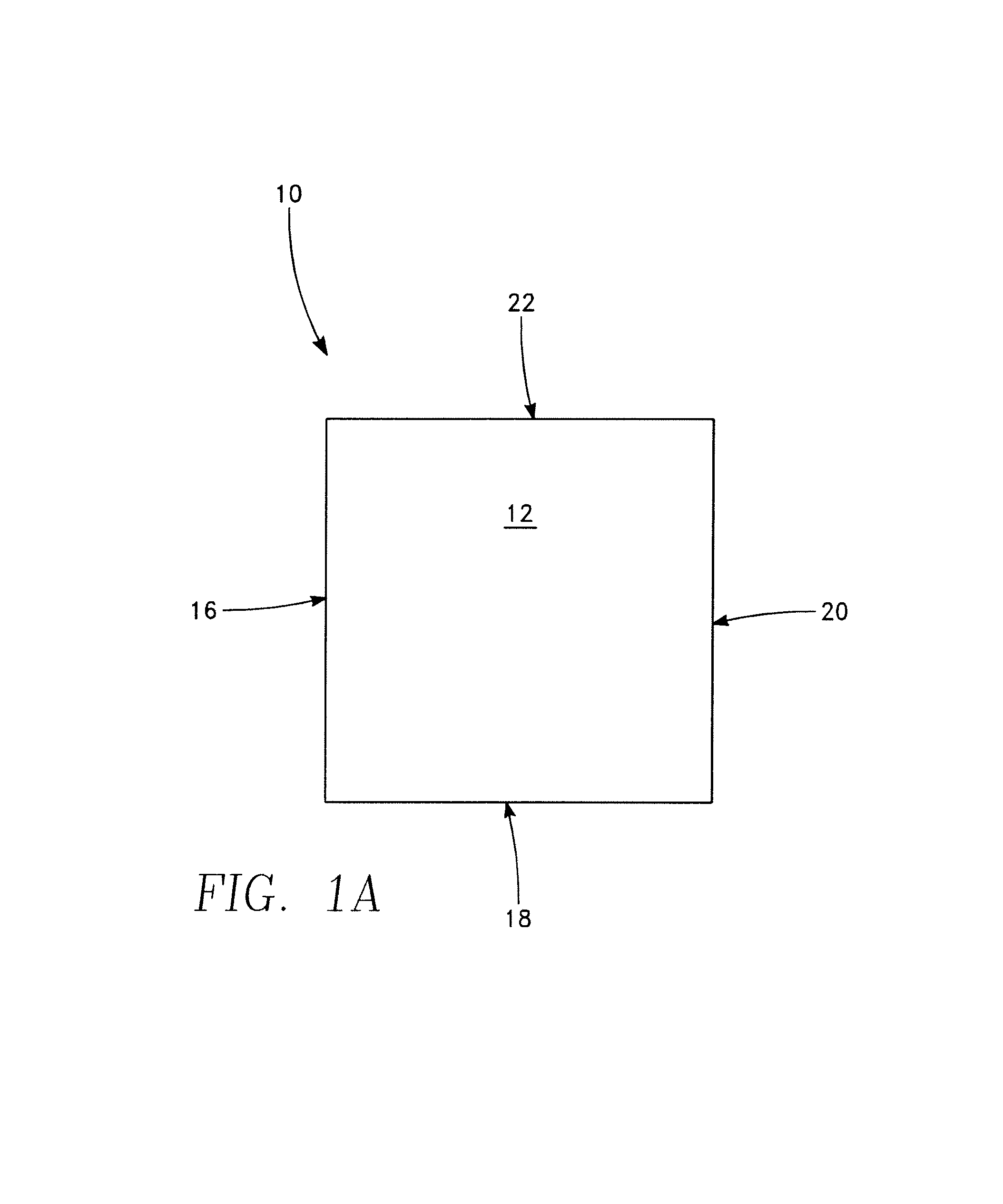Nest for solitary bees
a bee and nest technology, applied in the field of bee nests, can solve the problems of increasing the amount of time required for bees, reducing the ability of bees to identify and navigate to their nests, and congestion at the entrance of the nest openings, so as to reduce the aggressive behavior and possible injury, reduce or eliminate the congestion at the open end, and improve the recognition
- Summary
- Abstract
- Description
- Claims
- Application Information
AI Technical Summary
Benefits of technology
Problems solved by technology
Method used
Image
Examples
Embodiment Construction
[0013]The present inventor, having found that the known nests create congestion at the entrance to the cavities has conceived a nest which not only provides the nesting cavities known in the prior art, but where embodiments of the new nest reduce bee congestion at the entrance to the cavities, and some embodiments provide additional shelter apart from the cavities themselves. The current invention provides a stacking nest for solitary bees, which is particularly useful in, but not exclusively intended for, commercial pollination of fruit and seed crops.
[0014]Referring to FIG. 1 and FIG. 2, embodiments of the nest 10 comprise a rectangular solid. It is to be appreciated that the term “solid” does not refer to the composition of the matrix of the apparatus, which may comprise either a unitary solid or, as discussed below, a plurality of nesting elements, but rather the term is used in a geometric sense—the nest comprises a spatial solid. The nest 10 has a top 12, a bottom 14, a first ...
PUM
 Login to View More
Login to View More Abstract
Description
Claims
Application Information
 Login to View More
Login to View More - R&D
- Intellectual Property
- Life Sciences
- Materials
- Tech Scout
- Unparalleled Data Quality
- Higher Quality Content
- 60% Fewer Hallucinations
Browse by: Latest US Patents, China's latest patents, Technical Efficacy Thesaurus, Application Domain, Technology Topic, Popular Technical Reports.
© 2025 PatSnap. All rights reserved.Legal|Privacy policy|Modern Slavery Act Transparency Statement|Sitemap|About US| Contact US: help@patsnap.com



